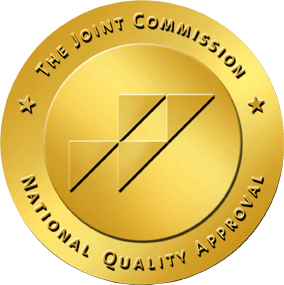Mental health care is becoming increasingly digital, and for good reason. As more individuals seek support for anxiety and depression, therapists and clinics are leveraging technology to improve outcomes, boost engagement, and ensure continuity of care. One powerful tool gaining traction is the online CBT journal, a guided digital space where patients can track thoughts, emotions, and behaviors in real time.
When implemented within a structured Partial Hospitalization Program (PHP), online CBT journals become a cornerstone of therapeutic engagement. These journals allow patients to carry the principles of Cognitive Behavioral Therapy (CBT) beyond the therapy room into their daily routines, encouraging active participation in recovery. At Improving Lives Now, a leading provider of PHP mental health programs in Miami, these strategies are already enhancing care for individuals with anxiety, depression, and co-occurring conditions.
What Is a CBT Journal and How Does It Help with Anxiety?
A CBT journal is a therapeutic tool used to help individuals reflect on their thoughts, emotions, and reactions in a structured way. In CBT therapy for anxiety, the journal typically follows a model that includes:
- Identifying triggering situations
- Noting automatic thoughts
- Naming emotions and physical sensations
- Challenging cognitive distortions
- Creating alternative thoughts or coping strategies
This journaling approach teaches individuals to recognize patterns, evaluate the accuracy of their thoughts, and build healthier responses. For individuals with anxiety, journaling serves as both a coping tool and a learning opportunity, reinforcing the core goals of CBT outside of therapy sessions.
The Role of CBT in a PHP Mental Health Program
A PHP provides intensive outpatient support for individuals experiencing moderate to severe mental health challenges. Patients typically attend therapy five days per week for several hours each day, making PHP an ideal environment for integrating structured CBT interventions.
At Improving Lives Now, CBT is a core part of the therapeutic curriculum. Their PHP services include:
- Group therapy that explores CBT principles and teaches core techniques
- Individual therapy where patients apply CBT to their unique experiences
- Medication management to support mood stabilization and anxiety reduction
- Family therapy to improve support systems
- Psychoeducation that explains the cognitive-behavioral model and emotional regulation
This consistent, high-touch format makes PHP programs the perfect setting for daily CBT journaling, especially when delivered online for greater ease and accountability.

Why Online CBT Journals Are Ideal for PHP Patients
1. Encourages Daily Engagement
In a PHP setting, patients are in treatment multiple days a week. An online CBT journal acts as a daily bridge between sessions, reinforcing therapy principles, tracking progress, and encouraging reflection.
2. Supports Therapist Oversight
With secure access to journal entries, therapists can gain deeper insight into a patient’s thought patterns, triggers, and emotional fluctuations. This enables more personalized and responsive interventions.
3. Enhances Self-Awareness
Many patients with anxiety experience racing thoughts or avoidance. Journaling creates space to slow down and think critically. When completed digitally, patients also get a clear timeline of emotional trends.
4. Reinforces CBT Techniques
Templates in the online CBT journal guide patients through identifying distortions, challenging thoughts, and creating rational responses,key skills in managing anxiety.
5. Tracks Progress Over Time
Digital journals allow for easy tracking of changes in mood, thought patterns, and behavior. This is especially helpful for clinicians to assess readiness for step-down care or discharge.
How Improving Lives Now Uses Journaling in PHP Services
Improving Lives Now provides a comprehensive PHP program for adolescents, adults, and seniors in Miami. Their services are structured around:
- Adolescents and Seniors: Monday to Friday, 9 AM to 2 PM
- Adults: Monday to Friday, 2 PM to 6 PM
- Substance abuse group therapy: Available on select evenings
- Additional Services: Transportation, lunch for morning programs, individual therapy, psychological assessments, and medication management
In this structured environment, journaling is seamlessly woven into care. Patients are encouraged to:
- Complete thought logs after group sessions
- Use CBT prompts to work through anxiety episodes
- Share relevant entries during individual therapy for deeper exploration
By integrating digital CBT journals, the clinical team at Improving Lives Now ensures therapy continues even when patients leave the facility each day.
What Makes an Effective Online Mental Journal for CBT?
Not all journals are created equal. To be helpful in a mental health PHP program, a digital CBT journal should include:
Guided Prompts
- Thought-behavior-emotion logs
- Distortion identification checklists
- Coping skill trackers
Mood Tracking
- Daily anxiety level ratings
- Visual graphs showing progress
Therapist Access
- Secure portal for therapist review
- Entry sharing options for sessions
Data Visualization
- Charts showing shifts in thinking and emotion over time
- Weekly summaries of key emotional and cognitive changes
Mobile and Web Access
- HIPAA-compliant platforms accessible from phones, tablets, and desktops
This structure helps patients stay consistent, feel supported, and engage with therapy even outside session hours.
How Online Journals Improve Anxiety Therapy Outcomes
When used consistently, digital CBT journals have been shown to:
- Improve emotional regulation: Patients gain a clearer understanding of their internal experiences
- Enhance treatment adherence: Journals make therapy more interactive and tangible
- Reduce avoidance behaviors: Writing things down forces confrontation of complex thoughts
- Improve therapist-patient collaboration: Therapists can proactively tailor sessions based on journaling patterns
- Track long-term progress: Both patients and clinicians can see measurable improvements
In a structured setting like PHP, these benefits are amplified. Patients receive the education and support needed to use journaling effectively, and clinicians have the oversight to respond to what the journals reveal.

Best Practices for Integrating Journaling into PHP Programs
To ensure success, clinics and therapists should:
- Introduce journaling early: Patients should know from day one how journaling will support their goals
- Offer training and tech support: Help patients feel confident using digital tools
- Make journaling collaborative: Use entries as part of therapy discussions
- Normalize imperfection: Remind patients there’s no “right way” to journal, consistency is more important than quality
- Celebrate progress: Highlight when journaling reveals meaningful insights or achievements
Empower Your Recovery with Online CBT Journaling in PHP
CBT journaling is a proven, accessible, and empowering practice for managing anxiety. Its impact is even greater when delivered online within a Partial Hospitalization Program. It becomes a daily anchor, a reflective mirror, and a collaborative tool between patient and therapist.
At Improving Lives Now, we incorporate structured journaling into our PHP care for individuals battling anxiety, depression, and co-occurring disorders. We aim to treat symptoms and equip our clients with the skills and tools to thrive long after the program ends.
If you or a loved one are seeking structured support, compassionate care, and fundamental tools for healing, reach out today. Your next step toward clarity and confidence is just a call away.
Improving Lives Now
7171 SW 62nd Ave. Ste 300, Miami, FL 33143
Email: in**@***************ow.com
Opening Hours: Mon – Fri 9:00 am – 7:00 pm
Tel: (305) 280-1440
5 Frequently Asked Questions (FAQs)
- Is CBT journaling effective for anxiety?
Yes. It helps patients identify and reframe unhelpful thoughts—one of the most effective strategies for managing anxiety. - Is online journaling as helpful as handwritten journaling?
Yes. Online tools offer added benefits like structure, tracking, and therapist collaboration. - Do patients have to share their journal entries?
Only with consent. Journals can remain private or be selectively shared during therapy. - Can teens benefit from digital CBT journaling in PHP?
Absolutely. Teen-friendly interfaces and prompts can increase participation and emotional insight. - Is journaling part of every PHP program?
Not all, but more clinics, like Improving Lives Now, are integrating journaling into their therapeutic model.


